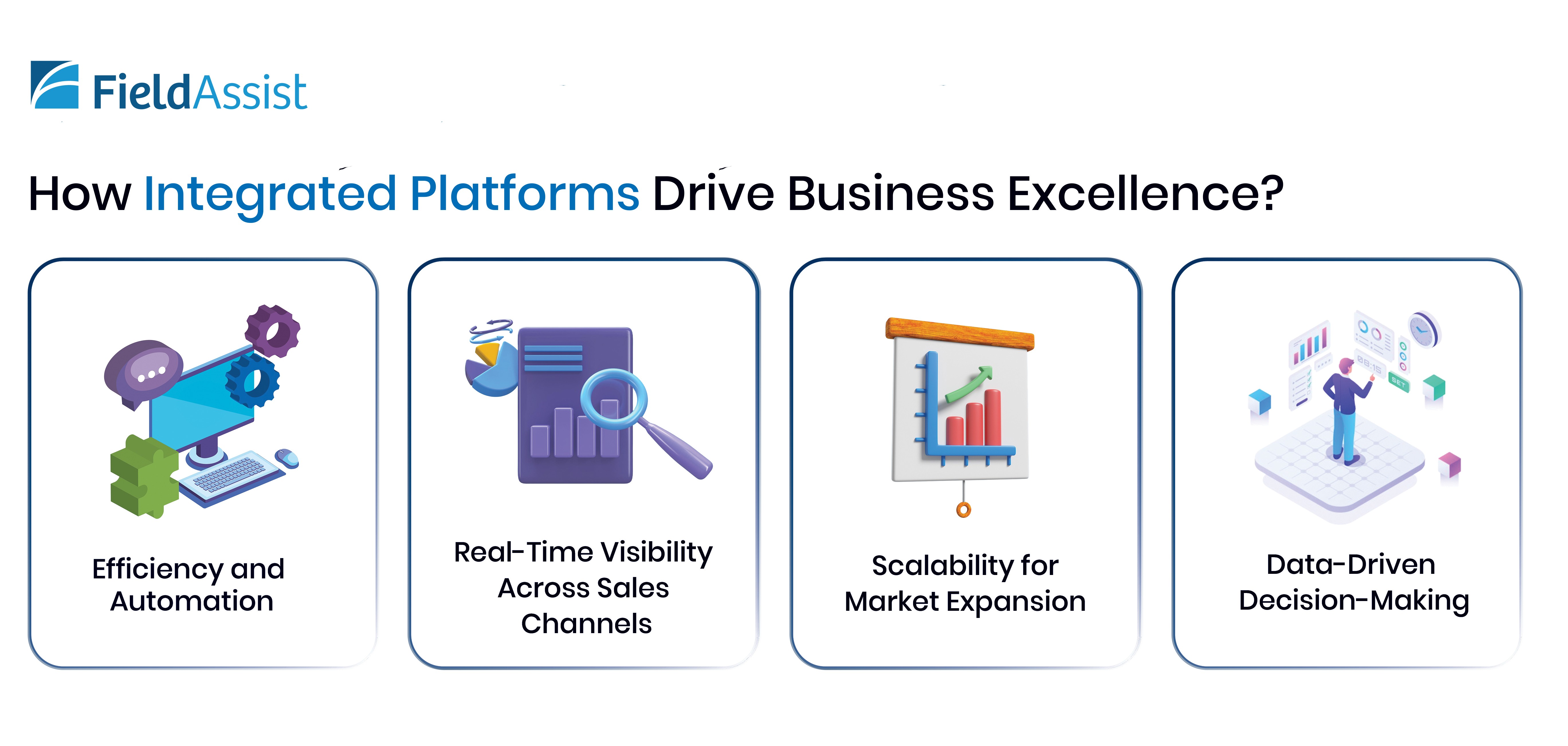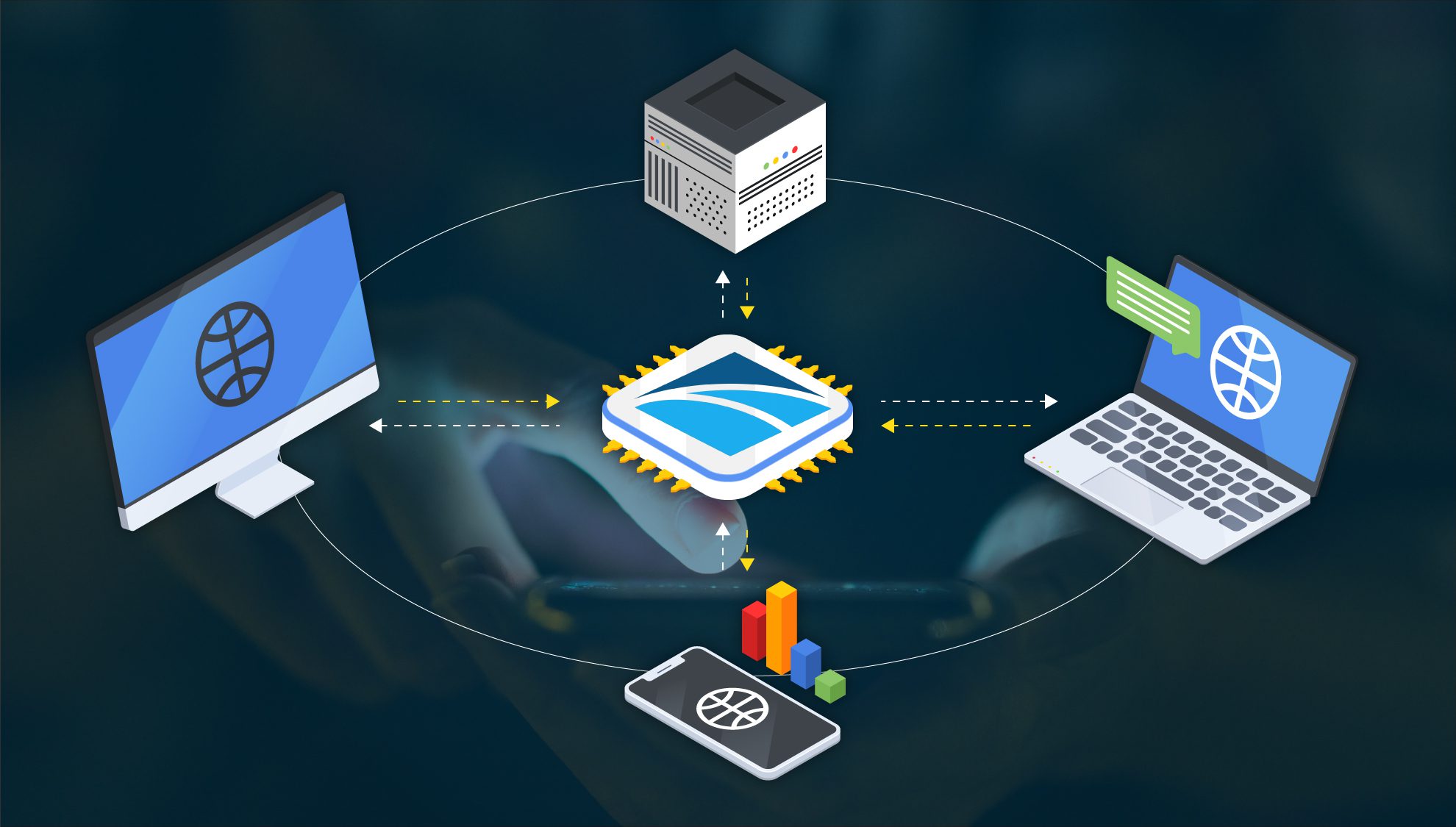Table of Contents
ToggleThe term “API integration” doesn’t look like a big thing to deal with initially but can you imagine a poorly integrated system can cost CPG companies millions in lost opportunities, inefficiencies, and operational bottlenecks?
Today’s FMCG businesses operate on a vast network of applications handling customer data, outlet transactions, distribution insights, sales performance, and market trends. However, if these systems don’t talk to each other seamlessly, businesses may struggle with fragmented insights, leading to stock mismanagement, delayed decisions, and revenue loss.
The advent of modern technologies allowed CPG companies to start automating their primary sales processes. As distribution channels evolved from GT (General Trade) to MT (Modern Trade), D2C (Direct to Consumer) and E-commerce, each channel required a solution capable of addressing business’s unique pain points.
Even though companies have different software for various use cases, their systems often do not sync effectively. This ultimately led to chaos and confusion among sales teams, distributors, and management.
The Cost of Disconnected Systems is Huge
Let’s say, a FMCG company is launching a new product in multiple cities. The sales team relies on one system for primary sales data, the distributors use another for secondary sales tracking, and e-commerce platforms operate separately. If these systems don’t sync, stock mismatches occur, some areas may face overstock while others run dry. The result? Lost sales, frustrated retailers, and an inability to capitalize on first-mover advantage in the market.
API Integration: The Digital Handshake You Can’t Ignore
There’s a reason why most CPG businesses are emphasizing “API-driven integration” these days. Brands who are serious about market growth and expansion no longer want to settle for manual handshakes, i.e. dumping secondary data onto the primary reports and expecting MIS folks to do their job. Having an “integrated” platform provides businesses with the flexibility to have seamless connectivity between their enterprise resource planning (ERP), distributor management systems (DMS), sales force automation (SFA), and varied digital platforms.
How Integrated Platforms Drive Business Excellence?

1. Efficiency and Automation: Disconnected systems mean manual data entry, delays, and errors. API integration automates data flow, reducing human effort, eliminating bottlenecks, and enabling faster decision-making.
2. Real-Time Visibility Across Sales Channels : A truly integrated system provides a 360-degree view of sales performance, whether through traditional retail, modern trade, or direct-to-consumer models. This visibility empowers businesses to anticipate demand, optimize inventory, and prevent stockouts.
3. Scalability for Market Expansion: As businesses grow, so does the complexity of managing multiple channels and regions. API integration enables seamless scaling by connecting new sales networks without requiring a complete technology overhaul.
4. Data-Driven Decision-Making: With synchronized data from all channels, companies gain actionable insights into consumer buying behavior, distributor performance, and market trends. This intelligence helps businesses refine their supply chain, marketing efforts, and sales strategies.
The Two API Software Integration Methods
1. API/Webhook Integration
Think of this as a direct pipeline between two systems. When data is updated in one system, it instantly flows to the connected system without delay. For instance, when an order is placed on an e-commerce platform, API integration ensures the warehouse system is updated in real time, preventing stock discrepancies.
2. FTP Integration
This works more like a courier service rather than a live connection. Data files are manually or automatically transferred between systems at scheduled intervals. While this method still facilitates integration, it’s slower and less efficient than API-based solutions.
API in Action: How Systems Talk to Each Other
1. Exposing APIs (Sharing Data with Other Systems)
- ERP Systems: Provide access to key business data, including inventory levels, customer records, and sales history.
- Enterprise Content Management (ECM): Share important documents like invoices, contracts, and distributor agreements with other business systems.
2. Consuming APIs (Using Data from Other Systems)
- Sales Force Automation (SFA): Retrieves customer data from ERP systems to give sales teams full visibility into past purchases and pending orders.
- ERP Systems: Access distributor management data to track order fulfillment, inventory movement, and payment history.
By integrating these systems, businesses create a more streamlined and efficient operation, reducing manual errors and enhancing overall performance.
Ensuring Security and Compliance in API Integrations

With digital transformation comes the need for robust security measures to protect business and customer data. Companies must ensure their API integrations meet the highest security standards, including:
1. SSL Certificates for Secure Data Transfer: SSL (Secure Sockets Layer) certificates encrypt sensitive data as it moves between systems, ensuring that only the intended recipient can access it. This prevents unauthorized access to critical information like sales records, customer details, and payment data.
2. Regular VAPT Assessments: Vulnerability Assessment and Penetration Testing (VAPT) helps identify security loopholes by simulating cyberattacks. Regular assessments ensure that FMCG businesses stay ahead of potential threats and maintain a strong security posture.
3. SOC 2 Type 2 Compliance: This rigorous audit confirms that a company follows strict security practices regarding data protection, availability, and privacy. Many customers demand SOC 2 Type 2 compliance or ISO 27001 certification as proof that their data is in safe hands.
What Happens When API Integrations Are Weak?
If API integrations are not robust, businesses face several critical risks:
- Data Inconsistencies: Poorly managed integrations lead to mismatched or lost data, causing inaccurate sales tracking and forecasting.
- System Failures: Fragile integrations result in frequent breakdowns, disrupting business operations and reducing productivity.
- Limited Functionality: Without seamless API connections, automation capabilities are restricted, forcing businesses to rely on manual interventions.
- Increased Complexity: Inefficient integrations complicate data management, making it harder to scale operations.
- Data Security Risks: Weak integrations expose sensitive business and customer data to security threats. Companies must ensure encryption, compliance, and security best practices to safeguard their digital ecosystem.
The Future of API-Driven FMCG Businesses
As FMCG companies continue to embrace digital transformation, API integration will become even more critical. Businesses that prioritize seamless system connectivity will not only optimize their sales and distribution networks but also gain a competitive edge in a rapidly evolving market.
The bottom line? Integration isn’t just an IT concern; it’s a business necessity.
For years, FieldAssist has empowered hundreds of FMCG leaders with strong API-driven ecosystems for their sales & distribution, which encouraged them to beat the competition and create a scalable space for themselves even in the toughest market.
So if you’re looking for API-Ready, secured sales and distribution ecosystem for your businesses, you’ve reached the right place.
About Post Author
Iftikar Hazarika
Iftikar is a Senior Customer Success Manager with expertise in Senior Stakeholder Management, Product Planning, Supply Chain Management, Customer Satisfaction, Customer Retention, Upselling, Cross-Selling, etc. A music enthusiast, his keen sense of what a customer really wants is matched equally by his amazing skills on the guitar and on the mic.


